#1872 edit
Explore tagged Tumblr posts
Text





1872 Steve's desk and journal, pre-canon, for @msermesth for the 616 server's stocking exchange.
big thanks to @kiyaar for pointing me in the direction of the right kind of gun for 1872 Steve. any historical inaccuracies present in this pic are because a wizard (Doom) did it.
#marvel edit#1872 edit#stony edit#stony art#marvel#marvel 1872#1872#steve/tony#superhusbands#stony#my art#posts I created#artist steve rogers#sheriff steve rogers#cowboy steve rogers#wild west au#western au#steve rogers' sketchbook#steve rogers sketchbook#my edits#my collages and edits#inspired by the work of chapeldean#chapeldean
64 notes
·
View notes
Text
Happy 152nd Birthday to Empress Alexandra Feodorovna of Russia (née Alix of Hesse)! June 6th 1872 🤍
"Many thanks for your dear letter and kind wishes for the birth of our baby, a nice little thing, like Ella, only smaller and with finer features, though the nose promises to be long." Princess Alice of Hesse to Queen Victoria, June 17 1872
"We think of calling our little girl "Alix" (Alice they pronounce too dreadfully in German)... I will add Vicky's name to baby's others, as you propose; and "Alix" we gave for "Alice," as they murder my name here: Allice" they pronounce it, so we thought "Alix" could not so easily be spoilt." Princess Alice of Hesse to Queen Victoria, June 17 + 24 1872
Edit made by me using Capcut
#I’ve been trying to upload this all day#queue and Wi-Fi issues ugh#anyway#happy birthday Alix!!!#🤍🤍🤍#Alexandra feodorovna#empress alexandra feodorovna#Alix of hesse#princess Alix of hesse#my edit#mine#made by me#royalty edit#June 6th#1872#royal birthdays#empress Alexandra#quotes#queen Victoria#princess Alice of hesse#Romanovs#Romanov#hessian royal family#russian imperial family#Russian history#CapCut#edits
34 notes
·
View notes
Text
tagged by @its-kinda-snowy!!
Rules: shuffle your repeat playlist and post the first ten tracks, then tag ten people!
Renegade - Kavinsky
Messy in heaven - Venbee
Melody - Sigala
Motions - Cassia
Tek it - Cafuné
Temporary Love - The Brinks
Sublime - Slenderbodies
Afraid - No Wyrld
In the Dying of the Light - Noel Gallagher's High Flying Birds
&burn - Billie Eilish
tagging: @highladyofdusk @nitewrighter @kishuszar @sphyrne @mysticalfg @yufiit @flightlesskiwi @constellation-skirmishes @astraldrake @vagorsol
#my playlist has 1872 songs on it so this was a serious game of cringe russian roulette#the odds of getting a shit song were high but not high enough. i actually got good ones this time! go me#also snowy ur songs. never let me down again? slippery ppl? tainted love???? ur taste. 100/10#tag game#saddening that my go to playlist doesnt have any faves on it tho loll its just my songs i Like#edit: i just realised it probably meant my On Repeat playlist on spotify huh.
71 notes
·
View notes
Text
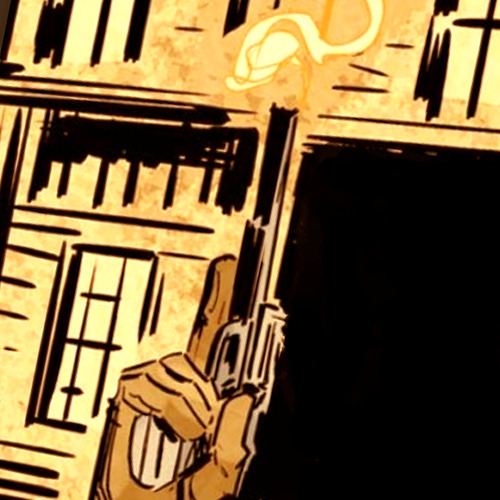







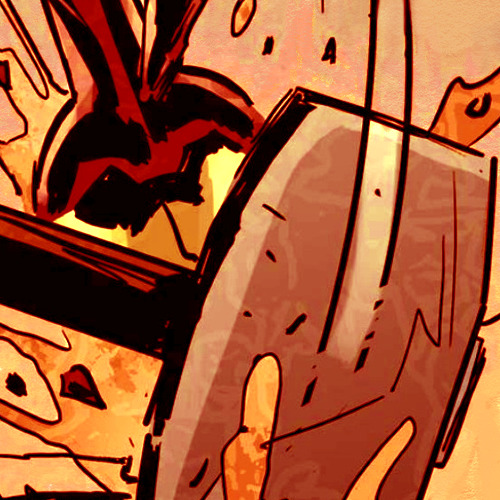
I wish the god of this place would put me in its mouth until I dissolve, until the field doesn’t end and I am broken down like a shotgun, swabbed clean. A Horse Grazes in My Shadow, Matt Rasmussen
for the 2023 @stevetonygames, Team Future. pass-it-on challenge with @loraneldin for bingo square: tears. Marvel 1872.
38 notes
·
View notes
Text
I know its a bit late to be ragging on the loki series still but i do think it would have been very funny if ut had a bit where loki travelled back to the 1800s, when neopaganism was taking its first tiny steps, and called bullshit on everything they were doing
#loki flicking through the huld manuscript like 'thats out of context thats wrong thats straight up bullshit idk where you guys got THAT from#loki listening to wagner and looking at (uhh that painting thats on that one bathory album) like girl what IS this#edit. the painting is The Wild Hunt of Odin by peter nicolai arbo (1872)
6 notes
·
View notes
Note
Hey do you think you could watch and give your throughts on youtuber Jonas Čeika video "marx was not a statist"?
Thank you
Quite honestly, the title alone already betrays some amount of anarchist metaphysics, the concept of stateism is a purely idealist notion which only works if you are a liberal about authority. But regardless, I still watched the full thing.
The video starts with a very semantic-focused discourse on how marx never used "socialism" to mean the lower phase of communism, and way too much time on the terms transitionary period/DotP as if they weren't two terms that refer to the same thing. In the case of socialism/lower phase of communism, I think he's obfuscating. He focuses the discussion on whether Marx used a certain term in the same way we do now. This would be like spending a good 5 minutes of a video presenting, with an almost accusatory disposition against modern communists, how the bolsheviks called themselves social-democrats, pretending like the terms haven't simply evolved. He promises an "active engagement with marxist theory" and he starts by arguing semantics. He even acknowledges this possible criticism, but you also then have to defend why that criticism is not valid, instead he acts like merely acknowledging it will make that criticism invalid. I'm also spending this time on this specific point because, later, he also forgets how Marx used the word "socialism".
When he does define the lower stage of communism, he engages in a very mechanic and economicist view, with the simple train of thought: No money (replaced with vouchers) > no capital to accumulate > no classes > no state. I think that just by asking how these vouchers will be regulated and how access to wealth restricted to the use of those vouchers, the conclusion that the substitution of money necessarily leads through that chain to the disappearance of the state becomes, very transparently, downright infantile.
In his point about how the Paris Commune changed Marx's view on the state, he cites excerpts in a very misleading way. The whole point starts by pointing out that, in the preface to the 1872 edition, the experience of the Paris Commune led Marx and Engels to the following analysis: "...the working class cannot simply lay hold of the ready-made state machinery, and wield it for its own purposes". This, along with a disregard of the importance of the specific policy points they outlined in the manifesto, and the importance of absolute centralization, means to him that Marx and Engels, actually, completely disregarded the use of the state on the road to communism. To quote Lenin: "Listen, comrade from Tiflis, one may prevaricate, but one should know the limit...."
What the video doesn't directly address (and although he talks about the text extensively, It's important to cite ideas where they actually come from), is that this quote, although it appeared in the 1872 edition of the manifesto, comes from Civil War in France, a longer text on the Paris Commune. This is a more complete context of that quote that the video never gives [ID in alt text]

That quote is the beginning of a chapter in which Marx describes how the Paris Commune governed itself, and how it broke with the series of revolts that happened throughout the period of feudalism, how the class character of the Commune marked it as the significant event that it is. It is true that the Commune's aspirations for the entire world was for its form to be replicated even in the smallest hamlet, and it may even be true that this influenced Marx to generally reject centralization of the state. However, what the breadtuber obviates throughout the entire video, is that a small state is still a state, and furthermore, that revolutionary strategy is not dictated by what is right or wrong, but by what can be done to advance the cause of the emancipation of the working class. It is one thing to reject the state outright, and another very different thing to acknowledge that it is necessary to take control of the state to emancipate the working class, even if you abstractly oppose the concept of a state. Not only to take control of the state, which is the point of the original quote, it is necessary to create our own worker's state, in whichever form it best suits the concrete reality: "the working class cannot simply lay hold of the ready-made state machinery, and wield it for its own purposes". Jonas says that the proletariat should, instead, create "radically democratic working class institutions". These gentlemen think that when they have changed the names of things they have changed the things themselves.
Instead of understanding that point, he goes even further. Jonas has understood that, by praising the measures taken by the Paris Commune (which, let's remember, failed after two months!), Marx and Engels began to believe that "[the state] is by nature bourgeois". Maybe Jonas started reading Bakunin instead of Marx without realizing, this is perhaps the most liberal and historically illiterate portion of the 30+ minute video essay. Again, comrade from breadtube, one may prevaricate, but one should know the limit. In fact, Marx even says in the same text being discussed: "It is generally the fate of completely new historical creations to be mistaken for the counterparts of older, and even defunct, forms of social life, to which they may bear a certain likeness". The irony needn't be explained.
As if Jonas hadn't misconstrued the text and Marx enough, he shows the quote: "... although there is nothing socialist in them except their tendency...". At first I was unable to find this specific quote in Civil War in France, not in any chapter nor in the footnotes. As it turns out, this quote is not from Civil War in France, as Jonas so succinctly cites it, but from the draft of the text. First, it's simply dishonest to cite such a cherrypicked line from a draft and passing it off as something Marx published.

There might be a myriad of possible reasons why this idea did not make it into the final text, but in order for the audience to correctly follow along, it's necessary for them to know where an idea comes from. Beyond this, which I find misleading enough, the video makes the point that with this line, Marx is clearly differentiating between a dictatorship of the proletariat and socialism. But hang on, didn't Jonas spend the first 5 minutes of the video explaining that, in the times of Marx, socialism was understood to be a reformist and petit-bourgeois stance? So, then, how could this out of context, unpublished line be Marx making a distinction between lower-phase communism and the dictatorship of the proletariat? This is the phrase's context [ID in alt text]:

The actual point of this portion is not even related to what Jonas makes it out to be. Here, using "socialist" as another name for utopians, Marx makes the distinction between previous movements of utopians, those socialist sects, and the Paris Commune, because even though their goals, the emancipation of labor, may appear similar, there is nothing socialist [utopian] in them because their means are not utopian, but the beginnings of scientific communism. So, then, not only did Jonas go back on the first point of the video to dunk on the evil stalinists, and not only did he completely remove the context of a phrase by failing to cite properly, but he also failed to even understand the points made in the text he's cherrypicking. Is this what passes for "active engaging with marxist texts" in breadtube?
After this portion, which I still consider the better half of the video, he veers into talking about socialism in one country, first by, again, very blatantly removing important parts of the texts he talks about. The quote he shows, from Principles of Communism, is as follows: "Will it be possible for this revolution to take place in one country alone? No. By creating the world market, big industry has already brought all the peoples of the Earth [...] into such close relation with one another that none is independent of what happens to the others [...] It follows that the communist revolution will not merely be a national phenomenon but must take place simultaneously in all civilized countries [...] It is a universal revolution and will, accordingly, have a universal range." It is true that Engels states that communist revolutions cannot be confined to the national scale, but those ommissions hide a lot of nuance that is very relevant to discussing Marx and Engels' positions on the national/international question. This is the full quote [ID in alt text]:

Marx and Engels were unable to completely and correctly analyze the imperialist form of capitalism, which hadn't yet fully crystallized, economically speaking. According to them, since capitalism was the most developed in places like England or France, the proletariat was also more developed, and the socialist revolution would happen first in these places, and propagate outwards. This notion was proved false by both theory (Lenin's imperialism) and by practice. Lenin identified that, as imperialism settled down as the highest stage of capitalism, the imperialist chain could only be broken at the weakest link, which was Russia at the time. I'm insisting on Lenin's theories because Jonas also claims Lenin to the "not statist" camp, and the video very quickly loses any originality by defaulting to the narrative of Stalin betraying Marx and Lenin by rejecting the world-wide revolution in the short-medium term as a pre-requisite for the establishment of a dictatorship of the proletariat. I think that going more in depth into this will only make this response unnecessary longer, but to end it, I think it's apt to end with a Lenin quote which directly refutes this anti-Lenin betrayal notion:
A United States of the World (not of Europe alone) is the state form of the unification and freedom of nations which we associate with socialism—about the total disappearance of the state, including the democratic. As a separate slogan, however, the slogan of a United States of the World would hardly be a correct one, first, because it merges with socialism; second, because it may be wrongly interpreted to mean that the victory of socialism in a single country is impossible, and it may also create misconceptions as to the relations of such a country to the others.
Uneven economic and political development is an absolute law of capitalism. Hence, the victory of socialism is possible first in several or even in one capitalist country alone. After expropriating the capitalists and organising their own socialist production, the victorious proletariat of that country will arise against the rest of the world—the capitalist world—attracting to its cause the oppressed classes of other countries, stirring uprisings in those countries against the capitalists, and in case of need using even armed force against the exploiting classes and their states. The political form of a society wherein the proletariat is victorious in overthrowing the bourgeoisie will be a democratic republic, which will more and more concentrate the forces of the proletariat of a given nation or nations, in the struggle against states that have not yet gone over to socialism. The abolition of classes is impossible without a dictatorship of the oppressed class, of the proletariat. A free union of nations in socialism is impossible without a more or less prolonged and stubborn struggle of the socialist republics against the backward states.
On the Slogan for a United States of Europe, V. I. Lenin (1915)
Overall, I think this video lacks any kind of rigor or respect for the texts discussed. Citations are pretty predominantly misleading or incomplete in some way, he extrapolates fantastical ideas from texts he doesn't appear to understand, and more in general, the way the video is concienved reeks of dogmatism, the arguments overwhelmingly boil down to "Marx said this (according to me), so it must be true". There is no actual engagement with texts, but there isn't even a will to engage with history. Marxism does not end with Marx and Engels, it's a philosophical and political framework that extends beyond the gospel of incomplete quotes. Even if Marx and Engels really did believe such anti-materialist ideas as "the state is bourgeois by nature", it would not change the facts that the history and experiences after the Paris Commune should also have weight in order to reach conclusions.
245 notes
·
View notes
Text
D.E.B.S. at 20: a Queer Cult Classic
Bessie Yuill Photo: Sundance/WireImage
There is a secret film hidden within the shadowy sapphic corners of Letterboxd. Some call it escapist trash, some call it an underrated cult classic, fools call it a male fantasy. It calls itself D.E.B.S. As other early-2000s chick flicks like Charlie’s Angels and St. Trinian’s have been reevaluated and embraced for their candy-floss aesthetics and campy wit over the years, the lesbian community was quietly reclaiming its own equivalent with 2004’s D.E.B.S.
The precursor to contemporary high-concept lesbian films like Bottoms, the spy flick is filled with something that queer female moviegoers still often yearn for: fun. That includes Jordana Brewster and her era-defying eyebrows as the impeccably named supervillain Lucy Diamond, John Woo–style fight scenes that parody the action genre in the same way as Charlie’s Angels, and a cheerfully cheap aesthetic where spies run around in plaid schoolgirl skirts.
D.E.B.S. was written, directed, and edited by filmmaker Angela Robinson. While “unapologetically queer” might be an overused phrase, it does apply neatly to Robinson. The Chicago-born director’s first project was a short film called Chickula: Teenage Vampire, calling on the long history of vampiric queer women that began with 1872’s Carmilla.
Her love of playing with genre led her to later put a lesbian spin on the movie musical by writing the underappreciated Girltrash: All Night Long and exploring polyamory in a period biopic about the creators of Wonder Woman, Professor Marston and the Wonder Women. On the small screen, she also burnished her lesbian credentials by working on several episodes of The L Word.
When D.E.B.S. started life as a short film, Robinson described it as “a story about a trio of superspies who are all chicks. I love all the comic-book characters: Charlie’s Angels, Batman, Josie & the Pussycats … But I always wanted them to be gay and they never were, so I wrote my own.” Success at Sundance led to Sony snatching the short up and deciding that D.E.B.S. should be a full-length feature.
Two decades later, the joy of this movie lies in the details. The tone is immediately set by a gravelly voice-over telling us that there is a secret test hidden within the SAT to recruit young female superspies (and establishing that, like Bottoms, this is a film aware of genre archetypes and willing to push believability). Our main character Amy (Sara Foster) is an academic overachiever — like many lesbians overcompensating for their perceived failure to live up to social norms. Her perfect score on the secret SAT test makes it even more scandalous when she falls for the aforementioned supervillain Lucy Diamond.
Queer friend groups may delight over the nostalgic frosty eye shadow and lip gloss worn by the D.E.B.S. (which stands for “discipline, energy, beauty, strength,” naturally) at all times. Flip phones, CGI holographic screens, and Goldfrapp’s appearance on the soundtrack will also remind you that you’re watching a film made in the early 2000s. And many will squeal when they spot Holland Taylor, over a decade before she came out, as the academy’s head.
Admittedly, the special effects are goofy enough to cross over into comedy, especially when our girls are abseiling into a restaurant or climbing walls with plungers, and the lighting could be charitably described as resembling teen soap operas of that era. But the chemistry between Amy and Lucy is crackling enough that YouTube compilations of their scenes have racked up hundreds of thousands of views online. Their fun enemies-to-lovers plotline begins with the pair pointing guns at each other and quickly progresses to a whirlwind romance (the other D.E.B.S. think Amy’s been kidnapped and launch a national manhunt, just as many friend groups have had to organize rescue missions for lesbians on weeklong first dates).
You could argue that espionage serves as a metaphor for the closet and that Amy is such an effective spy because she’s used to lying to herself about her sexuality. But that almost seems like too much weight to put on this meringue confection of a genre spoof: Its campiness liberates the characters to inhabit a fun, exaggerated universe with no serious homophobia or consequences. Guns are used, but the so-called superspies have such consistently terrible aim that there are no real casualties. And Lucy Diamond’s supposedly nefarious crimes are all reversible — the murders pinned on her are revealed to be misunderstandings, and she returns all of her stolen goods in order to win Amy back.
When this live-action Totally Spies with a lesbian twist debuted, it only made $97,000 and was dismissed by critics. But there were enough moviegoing gays impressed by its snappy dialogue, fun romance, and stunning supporting cast (including Meagan Good, Jimmi Simpson, and Devon Aoki with a French accent) for its reputation to grow online over time. In forums and YouTube comment sections, young girls were asking, “Are there any lesbian films where they just fall in love and have fun and don’t die at the end?” Their answer was D.E.B.S.

#D.E.B.S.#2004#Angela Robinson#LGBTQ+#Film#Queer joy#Criminally underrated#Cult classic#How is it#already 20 yrs later
297 notes
·
View notes
Text


historical fashion polls (halloween edition) info
64 notes
·
View notes
Text

The Novel predating Bram Stoker's Dracula.
Complete edition
Carmilla is an 1872 Gothic novella by Irish author Joseph Sheridan Le Fanu and one of the early works of vampire fiction, predating Bram Stoker's Dracula (1897) by 26 years. First published as a serial in The Dark Blue (1871–72), the story is narrated by a young woman preyed upon by a female vampire named Carmilla. The character is a prototypical example of the lesbian vampire, expressing romantic desires toward the protagonist. The novella notably never acknowledges homosexuality as an antagonistic trait, leaving it subtle and relatively unmentioned. The story is often anthologized and has been adapted many times in film and other media.
buy here
51 notes
·
View notes
Text
CDK: Company Cafeteria

Published: 9-25-2024 | Updated: N/A SUMMARY Cubic Dynamics by John B. Cube and Marcel Dusims forged the future with furnishings that were minimalist in design and maximalist in erudite pretension. Generations later, the company continues to produce edge-of-cutting-edge designs. Use the Cubic Dynamics Kitbash (Simmons, 2023-2024) collection to set up corporate, exposition, and office environments. Envisioned as an add-on to the Cubic Dynamics set (EA/Maxis, archived at GOS), it features minimalist and retro-futuristic objects. Find more CC on this site under the #co2cdkseries tag. Read the Backstory and ‘Dev Notes’ HERE. The COMPANY CAFETERIA set includes edited versions of the Focus Kitchen (Tolli/Simgedoehns) which are now linked to the recolors/textures in the #co2cdkseries. Use it to set up a cafeteria, breakroom or food court in your businesses.




DETAILS All EPs/SPs. §See Catalog for Pricing | See Buy/Build Mode You need the Company Expo (Mesh Pack) set (Simmons, 2024) for TXTRs to show properly in game. ALL files with “MESH” in their name are REQUIRED. You may need “move objects” and “grid on/off” cheats to place some objects to your liking. When placing partitions/floating shelves and tables/desks/counters on the same tile, place the partition/shelves first. I recommend using this set with Object Freedom 1.02 (Fway, 2023), which includes Numenor’s fix for OFB shelves (2006), for easier use overall. ITEMS Counter 001 (747 poly) Counter 002 (963 poly) Cupboard 001 (90 poly) - bookcase Dining Chair (1703 poly, HIGH) Dishwasher (1014 poly) Fridge (315 poly) Microwave (280 poly) Microwave Cupboard (450 poly) Oven Hood (516 poly) Sink (1036 poly) Stove (1520 poly, HIGH) Table Element (14 poly) Table Legs (Right/left) (24 poly) Trash Compactor (1872 poly, HIGH) Wall Cabinet 001 (Deco) (132 poly) Wall Cabinet 002 (110 poly) Wall Shelf (Functional) (126 poly) DOWNLOAD (choose one) CAFETERIA MESHES from SFS | from MEGA CAFETERIA RECOLORS from SFS | from MEGA COMPATIBILITY AVOID DUPLICATES: The #co2cdkseries includes edited versions – replacements - for items in the following CC sets: 4ESF (office 3, other 1/artroom, other 2/build), All4Sims/MaleorderBride (miskatonic library, office, postmodern office), CycloneSue (never ending/privacy windows), derMarcel (inx office), Katy76/PC-Sims (bank/cash point, court/law school sets, sim cola machine), Marilu (immobilien office), Murano (ador office), Reflex Sims (giacondo office), Retail Sims/HChangeri (simEx, sps store), Simgedoehns/Tolli (focus kitchen, loft office, modus office), ShinySims (modern windows), Shoukeir via Sims2Play(reverie office, step boxes/shelving), Spaik (sintesi study), Stylist Sims (offices 1,2, & 3, Toronto set), Tiggy027 (wall window frames 1-10), Wall Sims (holly architecture, Ibiza). *The goal is link the objects to the recolors/new functions in the #co2cdkseries without re-inventing the wheel! Credit to the original creators.

CREDITS Thanks: EarlyPleasantview/EPV, Panda, Soloriya, ChocolateCitySim, HugeLunatic, Klaartje, Ocelotekatl, Whoward69, LoganSimmingWolf, Gayars, Ch4rmsing, Ranabluu, Gummilutt, Crisps&Kerosene, LordCrumps, PineappleForest. Sources: Any Color You Like (CuriousB, 2010), Beyno (Korn via BBFonts), EA/Maxis, Offuturistic Infographic (Freepik). SEE CREDITS (ALT)
43 notes
·
View notes
Text
A year in illustration (2024), Part one


If you'd like an essay-formatted version of this post to read or share, here's a link to it on pluralistic.net, my surveillance-free, ad-free, tracker-free blog:
https://pluralistic.net/2024/12/07/great-kepplers-ghost/art-adjacent

As I go into my fifth year of writing Pluralistic (!), I find myself increasingly reflecting on the unexpected pleasures of creating the collages that head each post. I am by no means a visual artist – my drawing skills are sub-stick-figure, and my spatial sense overall is remarkable terrible. I can't solve jigsaws, I get lost in hotel corridors, and I can't find things that are right under my nose.
But addressing the challenge of illustrating extremely abstract ideas related to tech policy, corruption, monopoly and other hard-to-visualize ideas has awakened some kind of latent, heretofore unsuspected interest in visual communications in me. Relying exclusively on Creative Commons, public domain, and extremely solid fair use claims in selecting my source materials adds a spicy challenge that makes the whole thing even more engrossing.
I've written about my process in finding and preparing these sources before. Here's 2023's notes and highlights:
https://pluralistic.net/2023/12/21/collages-r-us/#ki-bosch
And here's 2022:
https://pluralistic.net/2022/12/25/a-year-in-illustration/
This year saw some new, exciting discovering and challenges. First and foremost is my switch to kagi.com as my preferred search-engine, which is like having access to a time machine that's connected to pre-enshittificated Google:
https://pluralistic.net/2024/04/04/teach-me-how-to-shruggie/#kagi
Kagi's image search is amazing, far better than Google's, and it has great copyright-based filters. When combined with tineye.com (for finding high-rez versions of images that might not be correctly tagged for rights status), it's even better. Even so, often Kagi will surface thumbnails of images Tineye can only find as high-rez on proprietary stock art sites like Alamy, covered in gross watermarks. These images are still in the public domain, watermarks or no, but erasing the watermarks is a lot of work. However, Alamy is a pretty good source of bibliographic information about the original sources of these images, for example, which issue of a 19th century boxing magazine they came out of, and then Kagi can find me high-rez scans of these sources, at the Internet Archive and/or the Library of Congress. I snag those PDFs and import them into the GIMP (which I use for editing) and pull, clean and crop a new high-rez version of those images for my own use. This year, I got much better at saving and organizing all that work on my laptop, but next year I'm hoping to get into a rhythm of uploading my high-rezzes to Wikimedia Commons so everyone can use 'em.
Getting better at collaging isn't merely getting better at using search tools, of course. Knowing what to search for is even more important, especially given the constraints of only using public domain/CC sources. The Library of Congress is a wellspring of visual material, but its own search tool is sadly lacking; however, Kagi's image search comes to the rescue again, thanks to the "site:loc.gov" flag, which restricts results to the LoC.
It was through these searches that I realized how many of the source images I was pulling down were the work of Joseph Keppler (1872-1956), an American political cartoonist who worked extensively for Punch:
https://en.wikipedia.org/wiki/Joseph_Keppler
Keppler was called upon to illustrate many, many political issues that have parallels with the modern competition, corruption and geopolitical stories. A scant few of these remain in the periphery of the public's imagination today, most notably "The Bosses of the Senate," quite possibly the most significant antitrust cartoon of all time:
https://en.wikipedia.org/wiki/The_Bosses_of_the_Senate
But Keppler is a wellspring of great public domain images, and I've been drawing on them heavily. It gives me great pleasure to do so, not just because they're so well-suited to the stories I write, but also because his posterity deserves it. He should be in the American illustrator pantheon alongside the likes of Norman Rockwell!
Besides my search engine and my sources, 2024 saw one other gigantic change in my collage-making: I had cataracts removed from both my eyes in September, and my ophthalmologist implanted lenses that corrected my severe astigmatism and permanently focused one of my eyes at 23" and the other at 25' (this is called monovision). My new eyeballs are still bedding in, and there are days when my vision is severely subpar, but I'm experiencing continuous improvement, and I think this will be a game-changer for 2025.
2025 will also see the long-awaited Version 3.0 release of The GIMP, the free/open image editor I exclusively use. GIMP (Generic Image Manipulation Program) was first released a quarter-century ago, and it's been in version 2.x for twenty years, so this is a big milestone. I can't wait!
https://lwn.net/SubscriberLink/998793/6c8d00bd1b2a7948/
Well, enough forematter. Let's get into this year's best illustrations. If you want high-rezzes of these (or any of my other collages), you can get them at full rez from my Flickr gallery of Pluralistic collages:
https://www.flickr.com/photos/doctorow/albums/72177720316719208

Someday, we'll all take comfort in the internet's "dark corners"
This one combines three sources: a public domain image of the Las Vegas sign, a CC 0 image of a western ghost-town, and a fair use gank of Mark Zuckerberg's metaverse avatar. I spent a lot of time hand-cropping the blades of grass around the sign's footing to create the illusion that it was planted in the ground. I'm also pretty happy with the dirt effect I managed on the sign.
https://pluralistic.net/2024/03/23/evacuate-the-platforms/#let-the-platforms-burn

Vice surrenders
I got these cover images from a gallery of old Dutch government workplace safety poster; they're delightfully gory in a way that rests comfortably in the cannon of Dutch bluntness. I did a lot of futzing with the Perspective tool to get the alignments right, atop the actual magazine covers (I believe they were Italian fashion magazines).
https://pluralistic.net/2024/02/24/anti-posse/#when-you-absolutely-positively-dont-give-a-solitary-single-fuck

How America's oligarchs lull us with the be-your-own-boss fairy tale
Man, I wish this one had a higher-rez original. The 19th century painting of a kid being read a bedtime story by her kindly granny was perfect, except it was only 804 pixels wide! The grinning Uncle Sam is from Keppler (Keppler's Uncle Sams are many, varied, and great). The grinning kid is from a 19th century collection of photos of child laborers, and I love his expression (he's a newsie). I think I did a really good job blending the US $100 (works of federal authorship are all public domain) with the bed curtains. I was disappointed with how the gold brick that granny's foot rests upon game out. I even followed my friend Alistair Milne's tip of cropping the brick, desaturating it, and putting it atop the gold texture in overlay mode and tweaking the curves. It just wouldn't pop the way it did in my mind's eye.
https://pluralistic.net/2024/02/16/narrative-capitalism/#sell-job

How I got scammed
This one uses some public domains stock art of a hacker in a hoodie, an online make-a-custom-credit-card generator, and two of my favorite visual tropes. The first is the 'code waterfall' effect from the credit sequences of the Wachowskis' 'Matrix' movies, which I use whenever I'm trying to illustrate something with a nexus with the digital world. I have a folder full of these, generated with this code waterfall generator:
https://github.com/Rezmason/matrix
The other element, of course, is the eye of HAL 9000 from Kubrick's '2001: A Space Odyssey'; there's an SVG of this on Wikimedia Commons by a user called 'Cryteria,' licensed CC BY 3.0, which I use whenever I want to illustrate a harm caused by computers:
https://commons.wikimedia.org/wiki/File:HAL9000.svg
https://pluralistic.net/2024/02/05/cyber-dunning-kruger/#swiss-cheese-security
(Image: Cryteria, CC BY 3.0, modified)

Solar is a market for (financial) lemons
I often write about scammers and hucksters, casting about for good visual representation. It wasn't until late January 2024 that I thought to look for an image of a carny barker and turned up this picture of WC Fields in full flight. He makes a lot of appearance after this point!
https://pluralistic.net/2024/01/27/here-comes-the-sun-king/#sign-here
(Image: Future Atlas/http://www.futureatlas.com/blog, CC BY 2.0; J Doll, CC BY 3.0; modified)

Boeing, Spirit and Jetblue, a monopoly horror-story
I was really determined to get the right aircraft for this story about Boeing 737s, but that meant cropping out the plane from Vitaly Druchenok's photo and then painstakingly recreating the Spirit Airlines livery. In the original version of the image, the airplane was sticking out of the roof of the Supreme Court, but my wife (wisely) vetoed that as suggesting a terrorist attack on the court (I wanted to imply that the court had caused the airline to crash).
https://pluralistic.net/2024/01/22/anything-that-cant-go-on-forever/#will-eventually-stop
(Image: Vitaly Druchenok, CC BY-SA 4.0; Joe Ravi, CC BY-SA 3.0; modified)

Tech workers and gig workers need each other
I cropped out these two women strikers from an early 20th century photo of a picket line and superimposed them on a photo of a massive union rally from the same era at (I think?) Madison Square Gardens. I am really chuffed with how nicely the (public domain) hacker/hoodie stock image and livery of a gig bike-delivery rider (fair use, ganked from a gig company's promo materials) blended with the strikers.
https://pluralistic.net/2024/01/13/solidarity-forever/#tech-unions

This one is in the running to be my favorite illo of the year. I knew it was going to slay the minute I found the image of the U Illinois campus secret society (spears! fezzes!). There's a really good public domain SVG recreation of the "Think Different" wordmark on Wikimedia Commons that I used here, spending some time getting the overlays and textures right:
https://commons.wikimedia.org/wiki/File:Apple_logo_Think_Different_vectorized.svg
https://pluralistic.net/2024/01/12/youre-holding-it-wrong/#if-dishwashers-were-iphones

End of the line for corporate sovereignty
I use this ogrish rich-guy-in-a-top-hat image all the time to represent the thuggish application of wealth; he comes from a delightful Soviet editorial cartoon called "Capital Controls the Government":
https://craphound.com/images/ussr-capital.jpg
Putting him behind the podium in a UN plenary room with a UN crest in his hand worked really well, though in hindsight, the cropped version I used for the post's hero image is even better:
https://craphound.com/images/27Mar2024.jpg
https://pluralistic.net/2024/03/27/korporate-kangaroo-kourts/#corporate-sovereignty
(Image: ChrisErbach, CC BY-SA 3.0, modified)

Conspiratorialism and the epistemological crisis
Another "thing at the front of a big room" image; this one works better that the UN one, I think.
Both of the sources for this have weird CC characteristics. The hearing room image comes from the Nuclear Regulatory Commission, a federal agency, and I am 99% certain that makes it public domain; however, whoever managed the NRC's Flickr account in 2014 applied a CC BY license to it, so I did the whole attribution for it, even though I think it wasn't needed.
The crumbled cardboard box image comes from a British company that sells cardboard boxes; they upload product shots to Flickr under CC BY 2.0 and require that the attribution string include their store's URL (not necessarily the URL of the image), presumably to get SEO backlinks. This is fine, but the CC BY 2.0 licenses have a serious defect in that a failure to correctly attribute them can give rise to serious ($150K!) copyright liability, something that a group of "copyleft trolls" have brutally exploited:
https://pluralistic.net/2023/04/02/commafuckers-versus-the-commons/
Which makes this kind of funky attribution a minefield. I try to touch all the bases by attributing to both the store's URL and the URL of the image. The real solution to this is for Flickr to finally update its CC licensing to push all its images up to CC 4.0 and push a notice to all users with CC images telling them they either have to consent to upgrading to the latest licenses, or have the licensing on their images reverted to "All Rights Reserved" (maybe with an asterisk explaining that they still have irrevocable but dangerous CC 2.0 licenses attached to them).
https://pluralistic.net/2024/03/25/black-boxes/#when-you-know-you-know
(Image: Nuclear Regulatory Commission, https://meanwell-packaging.co.uk, CC BY 2.0)

Your car spies on you and rats you out to insurance companies
I had so much fun with this one! Check out all those gracenotes! Munch's (public domain) "Scream" reflected in the mirrors, the windscreen, and the dashboard. The 'You Wouldn't Download a Car' parody reflected in the blade of the giant knife sticking out of the steering wheel!
https://pluralistic.net/2024/03/12/market-failure/#car-wars
(Image: Cryteria, CC BY 3.0, modified)

Wellness surveillance makes workers unwell
I love how this one turned out. The labcoated figure is actually a dentist from a gallery of images from the National Museum of Health and Medicine. The little flying guy in the back kills me.
https://pluralistic.net/2024/03/15/wellness-taylorism/#sick-of-spying
(Image: Cryteria, CC BY 3.0, modified)

Amazon's financial shell game let it create an "impossible" monopoly
I love this one. First of all, Hieronymus Bosch's 'The Conjurer' is a great visual representation of a slickster pulling a fast one on gawping yokels. But once I added Doc Searls' great shot of Jeff Bezos in mid-crazy-laugh to it (from a 2010 Techonomy Summit) it became perfectly trenchant. This was part of a short series of images that I added extra fingers and pupils to after someone scolded me online because they (incorrectly) believed I'd generated a collage with an AI image generator. Thankfully, that kind of absurd witch-hunting seems to have waned in popularity. What a ridiculous waste of everyone's time!
(Image: Doc Searls, CC BY 2.0, modified)
Part two
Part three
Part four
#art#collages#public domain#creative commons#cc#fair use#copyfight#visual communications#illustration#pluralistic illustrations 2024
48 notes
·
View notes
Text
New Exhibit: The Bibliophile and the Library: Private Press Books from the Collection of Bill Heidrich

Watercolor portrait of Assia Wevill by Leonard Baskin, in preparation for his future edition of Ted Hugues' poems, Capriccio. Poems by Ted Hughes. Engravings by Leonard Baskin. Searsmont, Maine: The Gehenna Press, 1990
The Special Collections Research Center is delighted to announce a new exhibit featuring a selection of private press books and artwork from the collection of Bill Heidrich, a long-time supporter of the University of Michigan Library. The display will open next week in the Hatcher Library Exhibit Room and will be available from January 13 to April 30, 2025.
All are invited to an opening reception at the Hatcher Gallery Event Space on January 23rd at 10am
Read more!

Edward Gordon Craig (1872-1966). Annotated proof by E. G. Craig in preparation for The Cranach Press edition of Hamlet: William Shakespeare (1564-1616). Die Tragische Geschichte von Hamlet Prinzen von Daenemark. Translated by Gerhart Hauptmann. Illustrated by Edward Gordon Craig. Weimar: The Cranach Press, 1928
#exhibits#libraries#archives#special collections#special collections libraries#libraries and archives#special collections and archives#events#fine press#art books
26 notes
·
View notes
Text

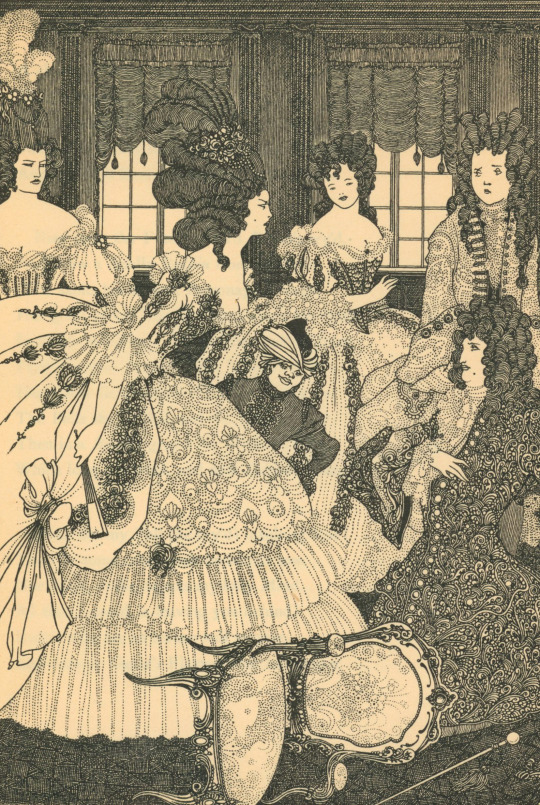
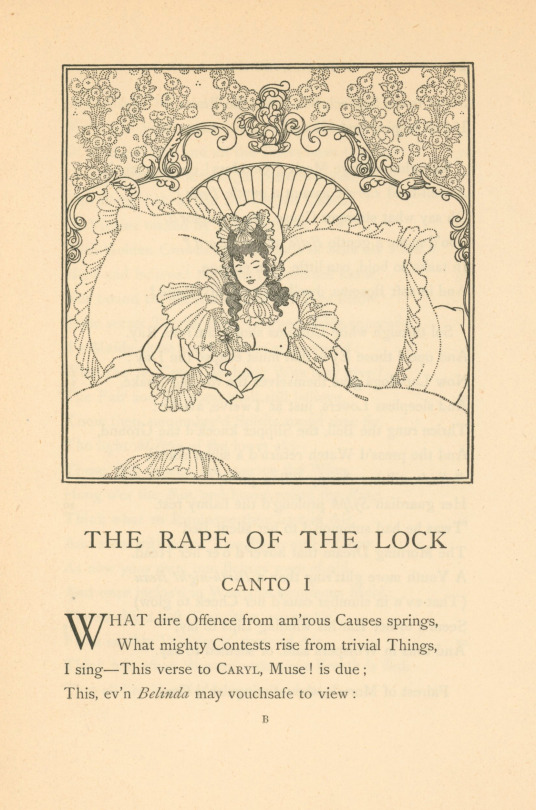

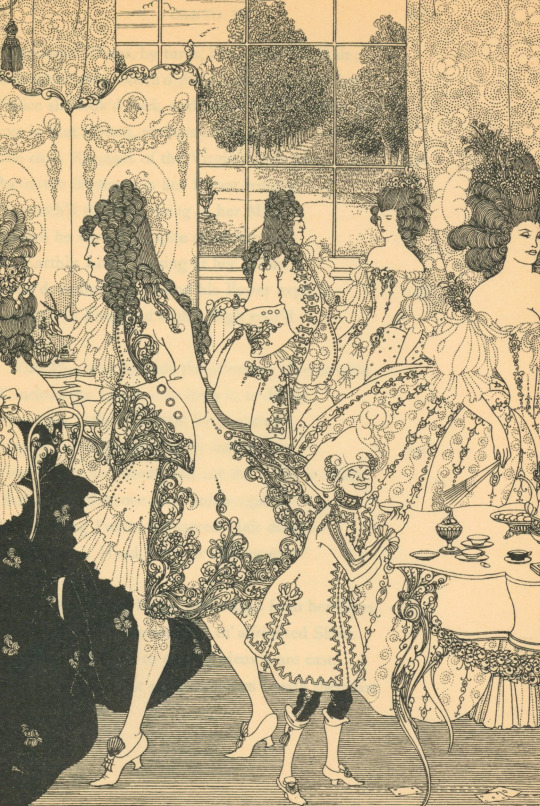



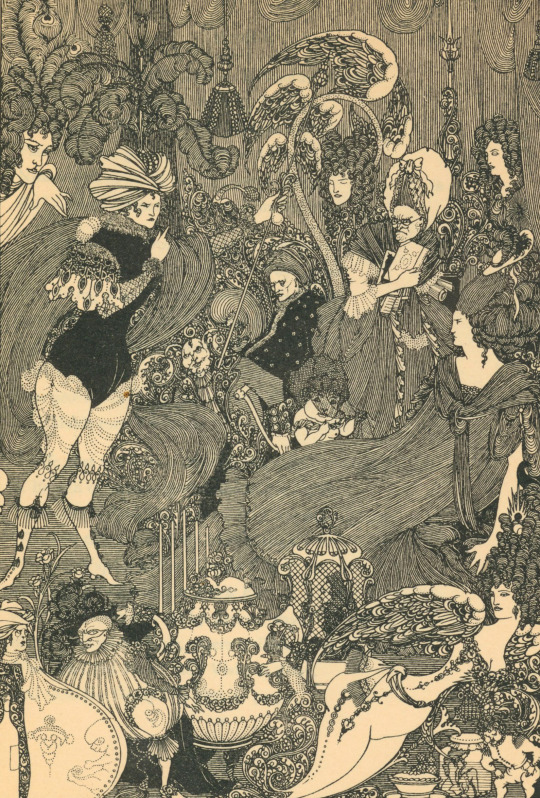

It’s Fine Press Friyay!
This week we’re digging into our 1896 copy of Alexander Pope’s (1688-1744) The Rape of the Lock: an heroi-comical poem in five cantos, which features decadent illustrations by Aubrey Beardsley (1872–1898). This crown quarto edition of 500 was issued in London by Leonard Smithers (1861-1907). It was printed on deckle edge paper at the Chiswick Press.
This publication is an excellent example of high burlesque, a style of satire in which “a literary, elevated manner was applied to a commonplace or comically inappropriate subject matter.” Pope’s epic treatment of a minor event of social trespass- the theft of a lock of Arabella Fermor’s (1696-1737) hair by Lord Petre (1689-1713), her suitor at the time of the incident and soon-to-be ex-fiancée, mocked the excessive role of social mores and morality in European culture of the era through exaggerated imitation.
Leonard Smithers was a London bookseller and publisher associated with the Decadent Movement, a 19th century Western European artistic and literary movement that prized aesthetic excess, artificiality, and hedonism. In addition to his support for Beardsley’s work, he also promoted the work of a number of controversial figure or the time including, amongst others, Max Beerbohm, Aleister Crowley, and Oscar Wilde.
The Chiswick Press was founded in 1811 by Charles Whittingham (1767–1840), who found success in producing accessibly priced editions of classics. His nephew Charles Whittingham II (1795–1876), who took over in 1840, was known for printing William Morris’s (1834-1896) early work, and would establish the press as part of the Private Press Movement in England, which started in reaction to the mechanization of book production. Contributors to the Private Press Movement championed the material qualities of their publications, lending heightened consideration to aesthetic choices and reviving traditional techniques of typography, binding, paper making, and printing.
--Ana, Special Collections Graduate Intern
View more Chiswick Press posts
View more Alexander Pope posts
View more Aubrey Beardsley posts
view more Fine Press Friday posts.
#Fine Press Friday#Fine Press Fridays#Chiswick Press#Aubrey Beardsley#Alexander Pope#crown quarto#The Rape of the Lock#high burlesque#satire#Decadent Movement#Leonard Smithers#Private Press Movement#Arabella Fermor#Lord Petre#Ana
105 notes
·
View notes
Photo

White Bull
White Bull (Tatanka Ska, l. 1849-1947) was a Hunkpapa Lakota Sioux warrior, nephew of Sitting Bull (l. c. 1837-1890), who is among the many claimed to have killed Lt. Colonel George Armstrong Custer (l. 1839-1876) at the Battle of the Little Bighorn. He may also be the main character in the well-known Cheyenne tale An Eagle's Teaching.
White Bull participated in several engagements with the US military, including the skirmish at Arrow Creek by the Yellowstone River (Elk River) in 1872 between Sitting Bull and Custer. White Bull is the primary source for the famous story of Sitting Bull's "smoking party" during that encounter at which he demonstrated his complete contempt for Custer and his men by calmly smoking his pipe with others, including White Bull, within range of Custer's men as bullets whizzed and thumped into the earth around them.
He also fought in Red Cloud's War (1866-1868) alongside Sitting Bull, Crazy Horse, Red Cloud, Spotted Tail, Two Strike, Roman Nose (Cheyenne Warrior), Cheyenne chiefs Morning Star (Dull Knife) and Little Wolf (also known as Little Coyote), among others, including the Cheyenne warrior Wooden Leg who is another contender for the title of the person who killed Custer at the Battle of the Little Bighorn, the most famous engagement of the Great Sioux War of 1876-1877.
After the Battle of the Little Bighorn, White Bull followed his uncle and others, including Sioux war chief Gall (l. c. 1840-1894) into exile in Canada. He eventually returned, earlier than the others, and surrendered to US authorities. He later became a judge and an advocate for the claims of the Sioux concerning the Black Hills. Like Two Strike (l. c. 1831-1915), White Bull's participation in the resistance to US westward expansion has been overshadowed by narratives of his more famous contemporaries.
He is best known today for his contributions to Stanley Vestal's Sitting Bull, Champion of the Sioux (1932), a biography of his uncle, and for Lakota Warrior (or The Warrior Who Killed Custer), his autobiography (1998) edited by James H. Howard. The activist Floris White Bull (Floris Ptesan Hunka), presently engaged in protests against abuses of Native Americans by the US government, is his direct descendant.
Early Life & War
White Bull was the son of Hunkpapa Sioux Good Feather (Sitting Bull's sister) and Miniconjou chief Makes-Room in the region of the Black Hills of modern-day South Dakota. His birth name was Bull-Standing-With-Cow, but, when he was 16, he "counted coup" on three enemy warriors (striking without killing them) and was given the name White Bull by his uncle Black Moon. He also took at least ten horses from the enemy during this engagement. The theft of horses from other nations (including the United States) counted toward one's status, wealth, and personal or communal power.
Little is known of White Bull's life prior to the 1860s as later writers tended to interview him mainly on his famous uncle. He fought with Crazy Horse (l. c. 1840-1877) at the Battle of the Hundred-in-the-Hands (Fetterman Massacre) on 21 December 1866 and was also present at the Wagon Box Fight (2 August 1867) during Red Cloud's War. After the Fort Laramie Treaty of 1868, White Bull continued his resistance to the genocidal policies of the US government through various raids and skirmishes but, among these, is best known for his account of Sitting Bull's "smoking party" at Arrow Creek in 1872.
Continue reading...
53 notes
·
View notes
Text

THE POETICAL WORKS OF ROBERT BURNS by Robert Burns, 1759-1796. Edited by Rev. Aris Willmott (London/New York: Routledge, 1872) Illustrated by Sir John Gilbert.








source
#beautiful books#book blog#books books books#book cover#books#vintage books#illustrated book#book design#robert burns#poetry#victorian era#john gilbert
27 notes
·
View notes
Text
Finished 31 December 2024 (just under the wire!):

A Glimpse of America and Other Lectures, Interviews, and Essays - Bram Stoker, edited and introduced by Richard Dalby
While packing for a trip this weekend, I found this book in an old messenger bag with an airline ticket dated 7 April 2023 stuck between pages 96 & 97. My Stoker project has obviously been backburnered long enough that I've forgotten it is even there. I still have hope that I will return to it after this I Saw the TV Glow paper is done, but I'm not even sure after reading the last couple of essays in this book where I want to go with that topic.
Stoker was a complicated human being, y'all. He was evidently still quoting Whitman as late as 1908, but how he could hold onto Whitman as a cornerstone of his literary identity while writing an essay about how "lewd" fiction was the highest evil and writers should self censor is...kinda beyond me, considering what Whitman's reputation was when Stoker was defending it in his early adulthood.
A couple of quotes from his 1872 lecture,The Necessity for Political Honesty, that I found particularly illustrative of my reading of Dracula:
"[L]et no man think that cynicism is the high road to success. The leaders of the world are not cynics, but enthusiasts, and to their honesty and purpose is progress due. The true motive of power of life is enthusiasm, and to the young it is natural. But without honesty this glorious gift of youth - its strength, its hope, its soul, is dead; for who is there that can feel one spark of passion in a cause when his heart is not his guide? And doing right with us is no mere matter of pleasure, but one of duty; we have been given ten talents to use, and the responsibility of trust keeps pace with the hope of the reward." (36)
"The old English romancers had a noble ideal in view when they made Galahad, the type of purity, pass unscathed through all dangers, and come out victorious from every fray. If we fight our battle under the oriflamme of truth, we must be victorious also. By a belief in our cause we gain half the battle, for we do not dread defeat - we may fall, but we fall with a glorious hope." (42)
I find his early essays mostly charming in their cheerful belief in the general goodness of the world, but gosh, those later ruminations on censoring "immoral" fiction and how the unemployed need to be jailed until they build up the strength to work left me tired and grumpy.
13 notes
·
View notes